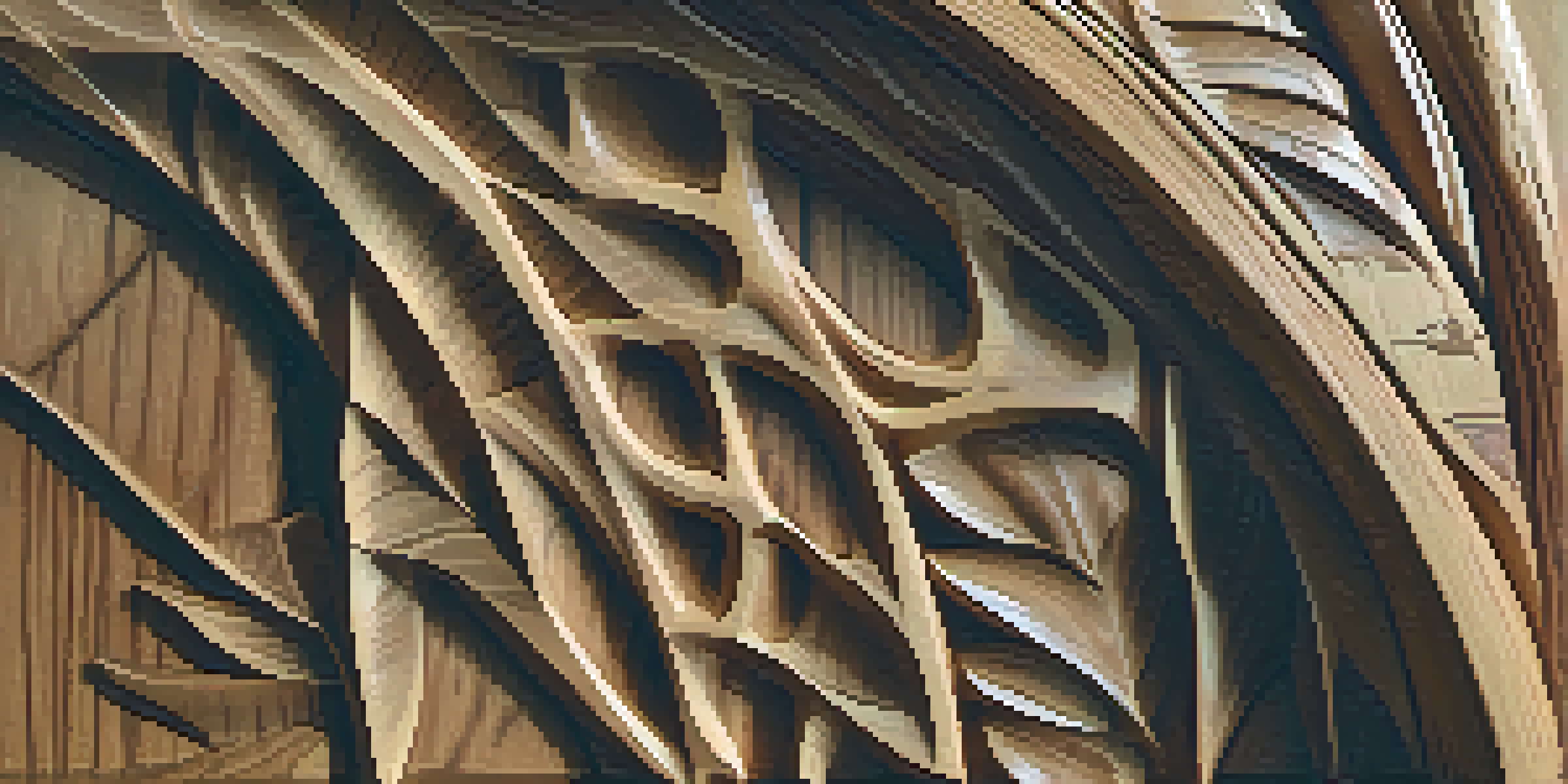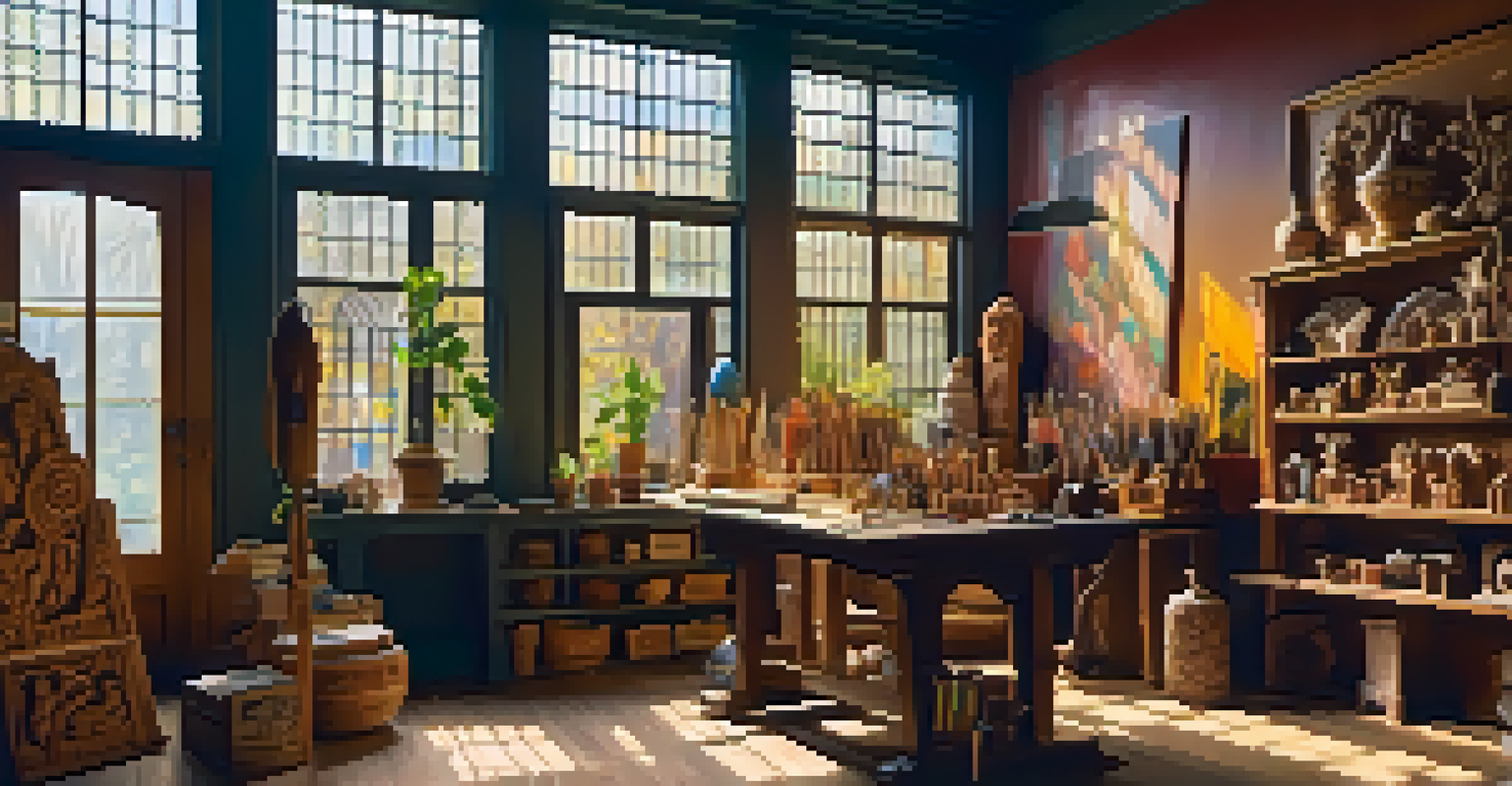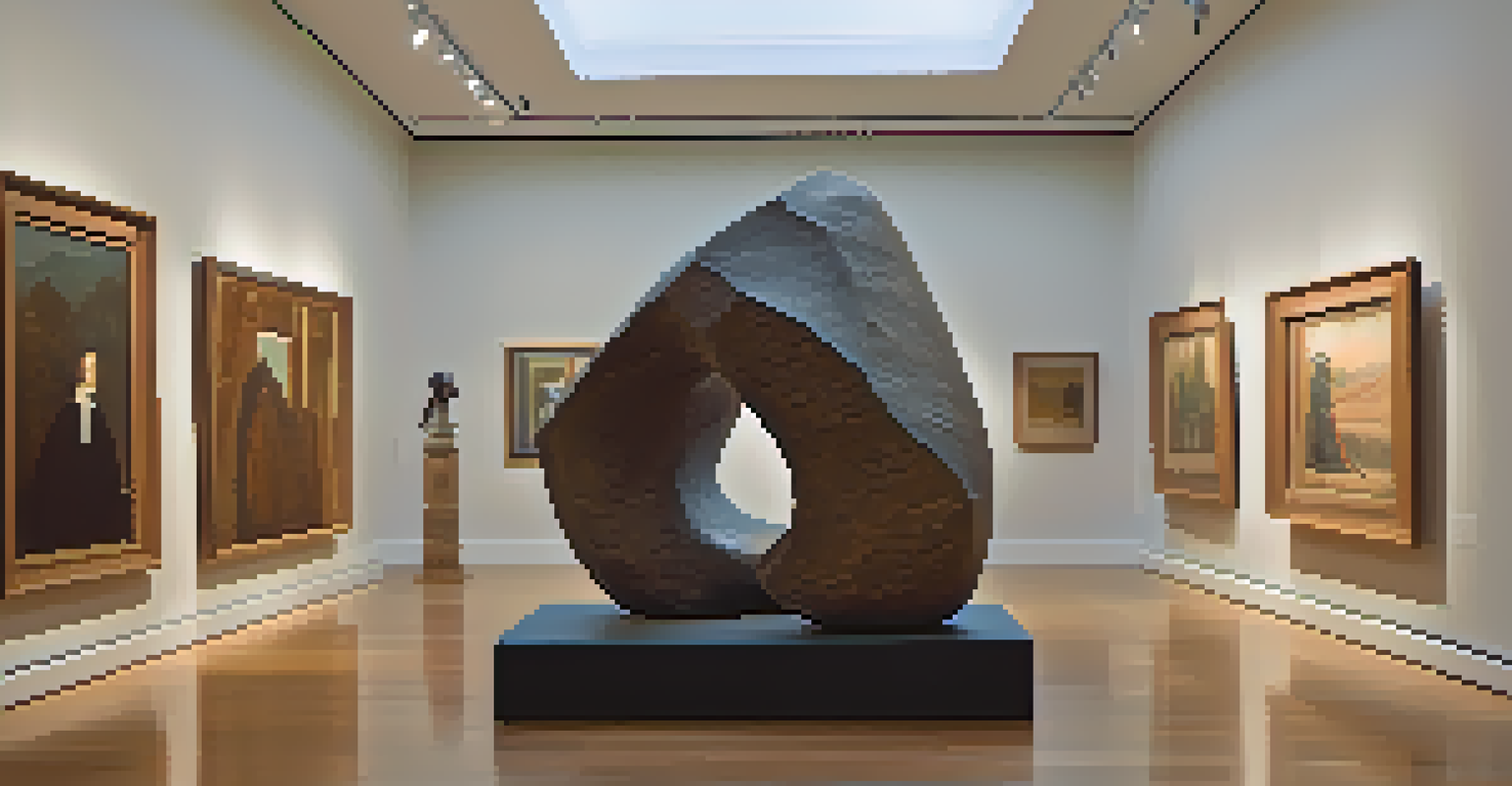Understanding the Role of Light in Carved Color Perception

The Basics of Color Perception in Art
Color perception is the way our eyes and brain interpret different wavelengths of light. When it comes to carved art, the depth and texture can significantly alter how colors appear. For instance, a deep groove may cast a shadow, making the color seem darker than it truly is. Understanding these basic principles is essential for artists and designers alike.
Color is the keyboard, the eyes are the harmonies, the soul is the piano with many strings.
In essence, color isn't just about pigment; it's also about light and how it interacts with surfaces. This interaction can create an array of visual experiences, from vibrant to muted tones, influenced by the carving's shape and depth. By grasping this fundamental concept, we can appreciate how light transforms colors in our visual world.
Moreover, the environment plays a crucial role in this process. Natural light versus artificial light can create dramatically different perceptions of color. Artists often consider these factors when designing their pieces to evoke specific emotions or reactions.
How Light Affects Texture and Depth Perception
Light doesn't just affect color; it also defines texture and depth. The way light reflects off a carved surface can highlight its intricacies or flatten its details. For example, a well-lit sculpture can reveal fine textures that might otherwise go unnoticed in shadow. This interplay adds a layer of complexity to our perception of the artwork.

When observing a carved piece, our eyes naturally seek out highlights and shadows, which guide our understanding of its form. A strong light source can exaggerate these features, creating a more dramatic effect. Artists often manipulate light intentionally to enhance or downplay specific aspects of their work.
Light Shapes Color Perception
The way light interacts with carved surfaces significantly alters our perception of color, emphasizing the importance of lighting in art.
This understanding can also enhance our appreciation of sculptures in various settings. A piece viewed under direct sunlight may appear entirely different than when seen in a dimly lit gallery. Such variances can lead to a richer engagement with the artwork as we explore it in different light conditions.
The Science of Light and Color Interaction
The science behind light and color interaction involves understanding how different materials absorb and reflect light. Carved surfaces can have varying textures that influence this behavior, leading to a unique visual experience. For example, matte finishes absorb more light and can appear duller, while glossy finishes reflect light, enhancing vibrancy.
The artist is the creator of beautiful things. Only the critic sees beauty in the work of others.
Additionally, the color temperature of light can affect how we perceive carved colors. Warm lights may make colors feel richer, while cool lights can add a crispness that changes our impression of the piece. This scientific aspect underlines the importance of lighting in the artistic process.
Artists often conduct experiments with light in their studios to see how their carvings react under different conditions. By understanding these principles, they can make informed decisions on how to present their work, ensuring it resonates with viewers the way they intend.
Natural vs. Artificial Light in Color Perception
The type of light—natural or artificial—can dramatically influence our perception of carved colors. Natural light, for instance, fluctuates throughout the day, offering a range of color temperatures that can enhance the visual qualities of a piece. Many artists prefer to work in natural light to achieve a true representation of their colors.
On the other hand, artificial lights come in various forms, each with its own color temperature and intensity. For instance, incandescent bulbs emit a warm glow that can enhance warmer colors, while fluorescent lights tend to have a cooler tone that might wash out certain hues. Understanding these differences is essential for both artists and curators.
Cultural Context Influences Color
Different cultures have unique associations with colors, impacting how carved artworks are interpreted and understood.
In gallery settings, curators often choose lighting carefully to showcase carved works effectively. The right balance of natural and artificial light can create an inviting atmosphere that draws viewers in, enhancing their overall experience with the artwork.
Emotional Responses to Light and Color
Light and color can evoke strong emotional responses, impacting how we perceive carved artworks. For example, warm colors illuminated by soft, warm light can create feelings of comfort and joy. In contrast, cool colors in harsh lighting might induce feelings of calmness or detachment, showing how lighting can shape our emotional connection to art.
Artists often harness this emotional power when creating their works. They might choose specific lighting conditions or colors to evoke desired feelings in their audience. This intention can lead to a more profound engagement with the artwork, allowing viewers to connect on an emotional level.
Understanding these emotional dynamics can also help viewers approach art with a more open mind. By recognizing how light and color influence our feelings, we can appreciate the artist's choices and the message they aim to convey more deeply.
Cultural Influences on Color Perception
Cultural contexts play a significant role in how we perceive colors and the emotions they evoke. Different cultures have unique associations with colors that can alter the interpretation of carved artworks. For instance, red may symbolize luck in some cultures while representing danger in others, highlighting the subjective nature of color perception.
Furthermore, the use of light in different cultures can also affect how carvings are viewed. Traditional lighting methods may create specific effects that enhance cultural narratives within the artwork. Understanding these cultural dimensions adds depth to our appreciation of carved pieces.
Emotional Responses to Light
Light and color combinations can evoke strong emotions, influencing our connection to and interpretation of carved art.
When viewing carved art from various cultures, it's essential to consider these influences. Acknowledging how light and color perception vary across cultures can lead to a richer understanding of the artwork's significance and the artist's intent.
Practical Tips for Artists and Viewers
For artists, experimenting with different light sources during the creation process can yield fascinating results. By observing how light interacts with their carved pieces, they can adjust colors and textures to achieve their desired effects. This hands-on approach can lead to innovative techniques and fresh perspectives on their work.
Viewers can enhance their appreciation of carved art by considering the lighting conditions in which they observe pieces. Visiting galleries at different times of the day or under varying lighting can reveal new dimensions of the artwork. Engaging with art in diverse contexts can deepen our understanding and enjoyment.

Lastly, artists and viewers alike should embrace the idea of exploring light as a dynamic element in the artistic experience. By appreciating how light influences carved color perception, we can cultivate a more profound connection to the art around us.